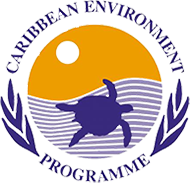Strengthening and Management of Protected Areas in the Wider Caribbean Region
The establishment and management of Protected Areas are addressed by Articles 4 to 9 of the SPAW Protocol.
The main objectives of this programme element are to:
- Strengthen the management of protected and/or managed areas of the WCR, including the establishment of networks of MPAs and/or MMA’s and supporting communication between protected areas, personnel and stakeholders within the region;
- Assist governments with the development of human capacity to increase the effectiveness of these areas, both at individual sites and for national systems;
- Sensitize governments about the need and importance of financing protected areas, and to promote the development of funding mechanisms and strategies for successful protected area management; and
- Promote or manage protected areas in the context of conserving important natural resources necessary for the sustainable development of the region.

Marine Protected Areas/Marine Managed Areas Activities
Traditionally, activities to strengthen these areas were implemented primarily through the Caribbean Marine Protected Areas Management Network and Forum (CaMPAM – legacy website) which was created in 1997 by the Secretariat to assist countries with MPA management issues through:
- A Small Grants Programme to facilitate exchange of experiences and lessons learnt between MPA managers/practitioners and fisheries managers.
- Enhancement of communications and exchanges through the existing electronic list and forum to build capacities.
- Training activities under the Training of Trainers (ToT) programme on MPA management in partnership with local and regional organizations
- Enhancement of the regional MPA database which has been updated with support from the now concluded Italian EBM Project at the end of 2019.
Courses over the past 5 years -
- 11th Edition of ToT programme on MPA management (English-speaking) - St. George’s, Grenada, February 2015 (in partnership with IUCN-BIOPAMA (Caribbean))
- 12th Edition of ToT programme on MPA management (Spanish-speaking), Montecristi, Dominican Republic, September 2016 (in collaboration with ReefCheck DR)
- 13th Edition of ToT programme on MPA management (English-speaking) - Bridgetown, Barbados, April 2018 (in collaboration with CERMES)
CaMPAM – a new era
During the 10th SPAW COP held in Roatán, Honduras (June 2019), it was recommended that the Secretariat undertake a comprehensive review to determine the impact of CAMPAM activities thus far in order to evaluate the network’s effectiveness, and guide future work with a view towards ensuring that activities are aligned with the Protocol’s activities/goals.
The old CaMPAM website which was previously hosted by the GCFI will also be migrated and incorporated with the Secretariat website. The CaMPAM Listserv continues to be hosted by the GCFI but is now managed by the SPAW-RAC.
This will be supported by the new ACP-MEA project (see below), which will also enable strengthened regional cooperation with other networks.
Plans for the 2019-2020 Biennium:
- Major projects
- The United Nations Development Programme (UNDP)/GEF funded project “Catalysing Implementation of the Strategic Action Programme for the Sustainable Management of Shared Living Marine Resources in the Caribbean and North Brazil (CLME+)” is a 5 year (2015-2020), USD12.5 million project that seeks to facilitate ecosystem based management (EBM) and an ecosystem approach to fisheries (EAF) within the CLME+.
The project is implemented by the United Nations Office for Project Services (UNOPS) with the activities within the Caribbean region supported by the SPAW and Assessment and Management of Environmental Pollution (AMEP) sub-programmes.
The SAP: A 10-year Strategic Action Programme (SAP) for the sustainable management of shared Living Marine Resources in the Caribbean and North Brazil Shelf Large Marine Ecosystems
The CLME+ SAP (2015-2025) is a key output for the first UNDP/GEF CLME Project (2009-2014). Read the SAP Booklet here for more details.
- The ACP-MEA project (Phase II) in coordination with the AMEP subprogramme which will provide funding support for MPAs in the assessment of SPAW listed sites, listing new MPAs, the integration of SPAW MPAs Networking Group to lead the Inter-Regional network, development and adoption of management effectiveness guidelines and criteria, and intervention activities to improve this management effectiveness for the networks.
- Revitalization of the CaMPAM Network and steps to create a regional network of protected areas which will be supported by the new ACP-MEA project (BIOPAMA, NAMPAN, MPA Connect, RedGolfo)
- Continued support to attend MPA-related sessions and the participation of MPA practitioners at the annual GCFI Conferences (2019 and 2020).
As a general reminder, for listing of protected areas under the SPAW Protocol as per Article 7 with the support of SPAW-RAC, Parties can nominate their protected areas to be nominated in the list towards the development of a cooperation programme and network. For more on the listing process, criteria and meetings to date visit here.






